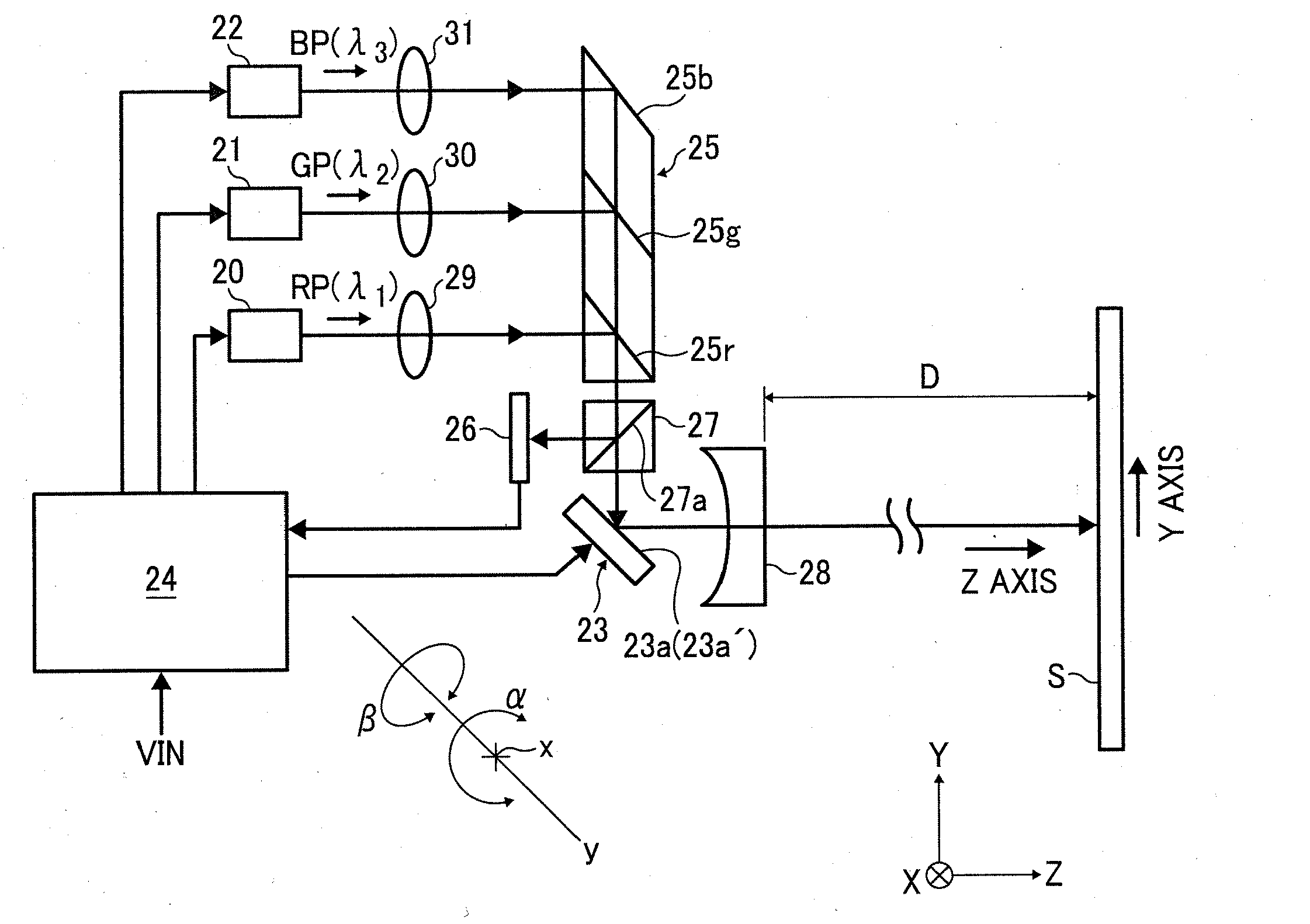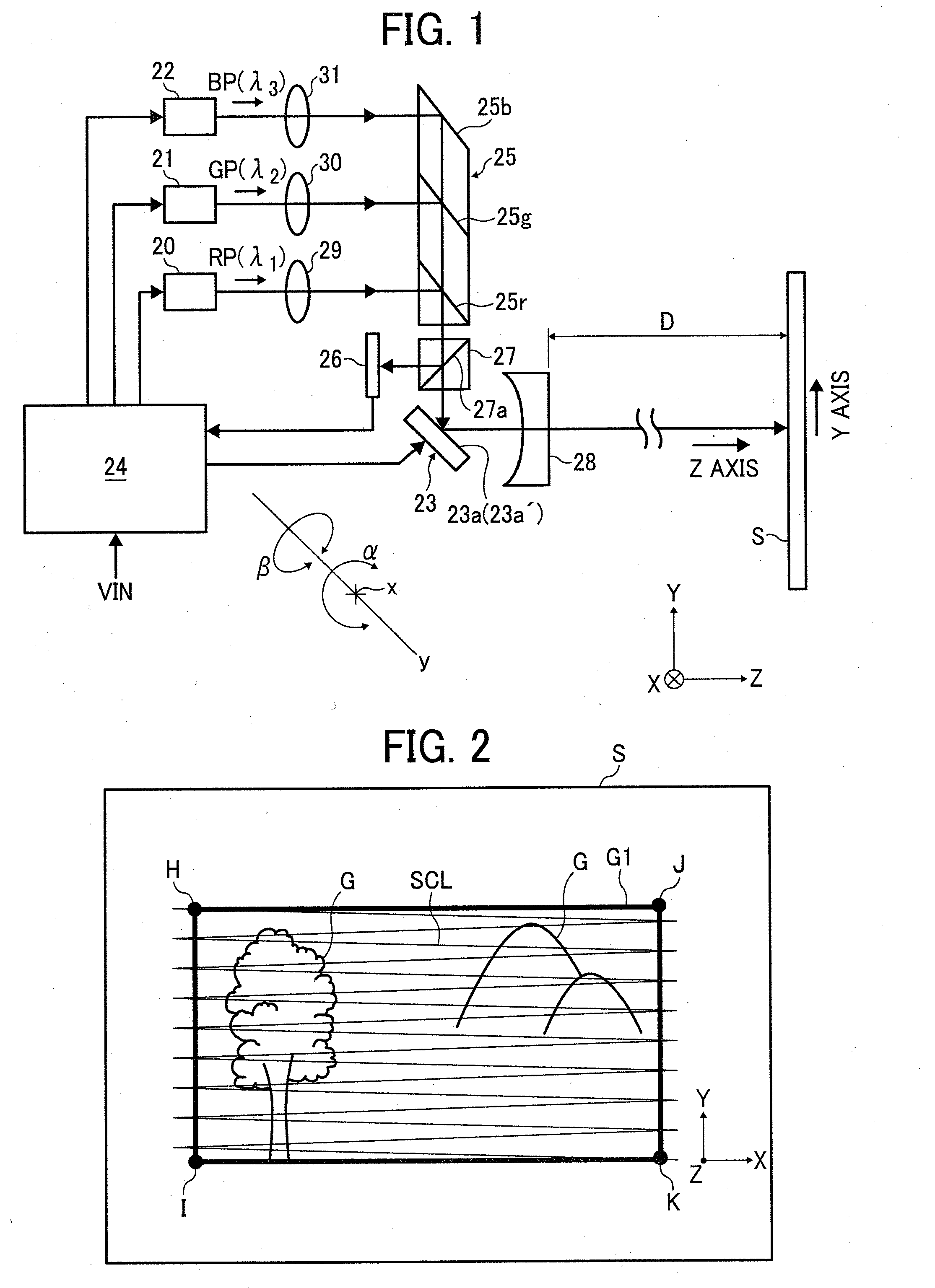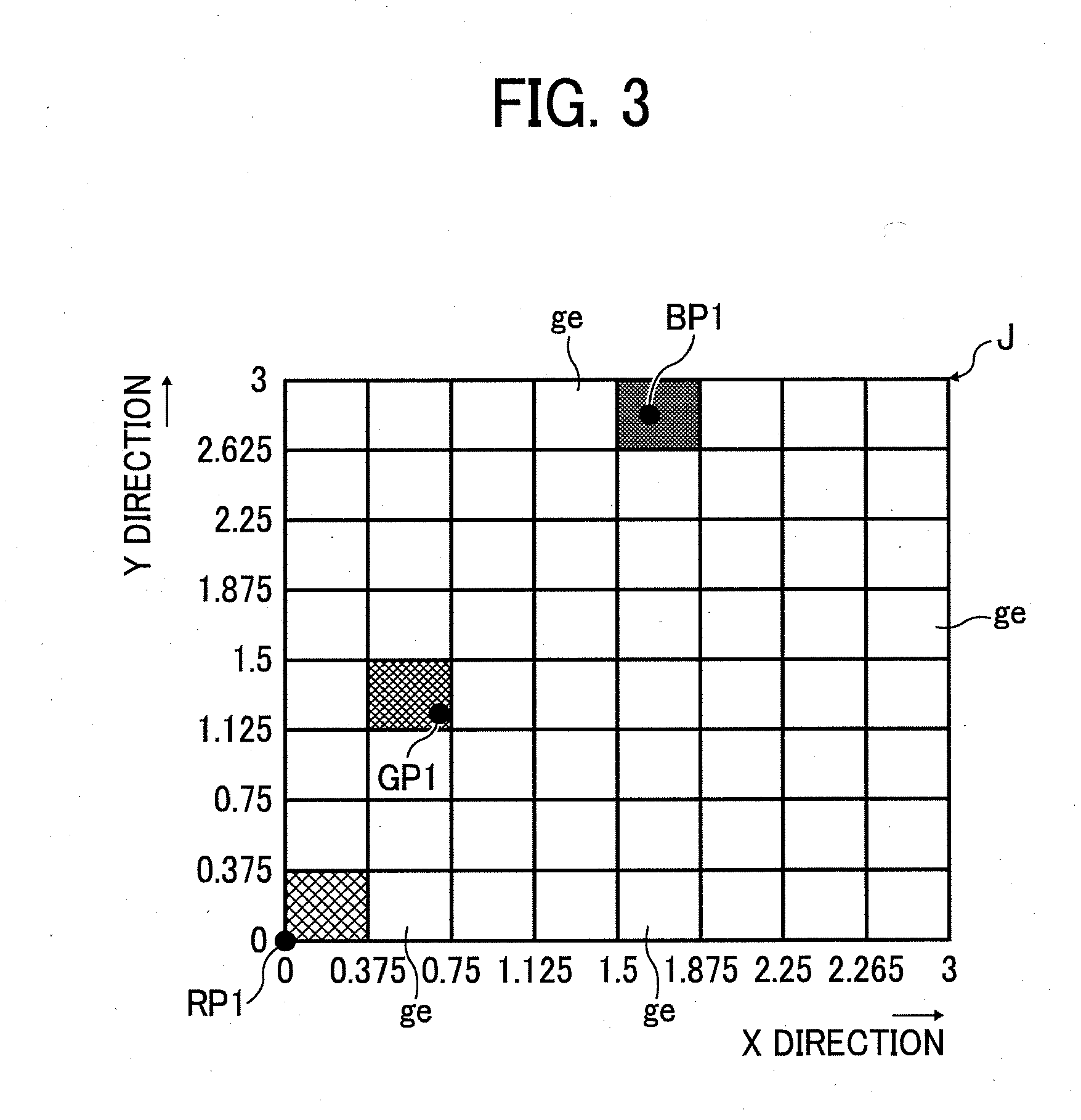Projection-type image displaying apparatus
a technology of projection-type images and displaying apparatuses, which is applied in the direction of projectors, optics, instruments, etc., can solve the problems of cost-up, inability to reproduce the original image faithfully, and degrade the color balance of the screen, so as to reduce the color change of the image, avoid the increase of a number of components and cost-up, and improve the brightness of the image
- Summary
- Abstract
- Description
- Claims
- Application Information
AI Technical Summary
Benefits of technology
Problems solved by technology
Method used
Image
Examples
embodiment 1
[0050]FIG. 1 is a view showing an optical system of a projection-type image display apparatus according to an embodiment of the present invention.
[0051]In FIG. 1, reference number 20 indicates a laser light source configured to emit a red laser light RP (wavelength λ1) as a diverging light, 21 indicates a laser light source configured to emit a green laser light GP (wavelength λ2) as a diverging light, 22 indicates a laser light source configured to emit a blue laser light BP (wavelength λ3) as a diverging light, 23 indicates a MEMS mirror device, 24 indicates a control circuit, 25 indicates a light-path combining prism, 26 indicates a light receiving element for monitoring a light amount (referred to as “light receiving element” or “monitoring light receiving element”), 27 indicates a light-path splitting prism, and 28 indicates a concave lens as a projection lens.
[0052]Original image data (R, G, B data of input video signals, projection position data, and the like) VIN are input t...
example 2
[0103]FIG. 6 is an explanatory view showing a relationship between light emitting timings of the laser light sources 20, 21 and 22 at vicinities of the coordinate points H, I, J and K of the image forming area G1 and emitting light intensities. In FIG. 6, a horizontal axis indicates time t and a vertical axis indicates an emitting light intensity POW. At the vicinities of the coordinate points H, I, J and K, as described above, if the laser light sources 20, 21 and 22 emit the laser lights at a same timing, beam spots of the laser lights RP, GP and BP are respectively formed at different pixels ge from each other on the screen.
[0104]The light emitting timings of the laser light sources 20, 21 and 22 are shifted from each other such that the beam spots of the laser lights RP, GP and BP are formed on the same pixel ge to reproduce a color of the original image data at the pixel.
[0105]It is only needed to determine the emitting light intensity POW as to closely reproduce the color of t...
example 3
[0110]FIG. 7 shows a photoelectric conversion efficiency of the light receiving element 26 in relation to a wavelength. The photoelectric conversion efficiency is shown by a curve which functionally changes, as shown in FIG. 7, in relation to the wavelength. The photoelectric conversion efficiencies are, 0.45, 0.33, and 0.23 (A / W) with respect to the red light RP of the wavelength λ1=640 (nm), the green light (GP) of the wavelength λ2=530 (nm) and the blue light (BP) of the wavelength λ3=445 (nm), respectively.
[0111]Accordingly, if it is supposed that the light receiving element 26 receives same light amounts of the lights of the wavelengths λ1, λ2 and λ3 each other, output currents of the light receiving element 26 are in a proportion of red:green:blue=4:3:2. That is, when the light receiving element receives the red light, the received current which is twice the blue light is output.
[0112]In the second embodiment, at the light emitting timings t1, t2 and t3, the maximum emitting l...
PUM
 Login to View More
Login to View More Abstract
Description
Claims
Application Information
 Login to View More
Login to View More - R&D
- Intellectual Property
- Life Sciences
- Materials
- Tech Scout
- Unparalleled Data Quality
- Higher Quality Content
- 60% Fewer Hallucinations
Browse by: Latest US Patents, China's latest patents, Technical Efficacy Thesaurus, Application Domain, Technology Topic, Popular Technical Reports.
© 2025 PatSnap. All rights reserved.Legal|Privacy policy|Modern Slavery Act Transparency Statement|Sitemap|About US| Contact US: help@patsnap.com



